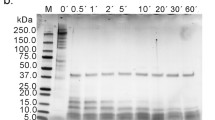Abstract
Development and characterization of guinea pig anti-insulin polyclonal antibody against a target-specific insulin antigen. In India, an insulin immunogenicity kit for detecting insulin antibodies (neutralizing Nab) is an unmet medical need for diabetic patient’s routine diagnosis. Type 1 diabetics rely on insulin injections daily basis for survival; if the body develops anti-insulin antibodies and neutralizes the exogenous recombinant insulin, glucose control is lost, and the patient eventually dies. Antibodies are excellent diagnostic reagents due to the specificity and sensitivity they provide in recognizing specific and unique target antigens. The paper describes the use of insulin as a target antigen and the development of target (insulin) specific antibodies in guinea pigs for use as a positive control for immunogenicity kit validation. Anti-insulin polyclonal antibody was raised against insulin in the Dunkin Hartley guinea pigs host. Anti-insulin antibody titer of all bleeds from four animals was tested using an indirect ELISA assay format. All four animals responded to the target-specific antigen but only one animal (#4) responded with a high-affinity antibody titer. The hyperimmune sera were purified using a protein A column. The purified anti-insulin antibody was characterized through SDS Page and western blot. The specificity, reactivity, and antibody binding efficiency were confirmed through immunoassays. Guinea pig anti-insulin polyclonal antibody developed in this study showed good specificity, reactivity, and efficiency in the immunoassays. This paper describes the development and characterization of anti-insulin antibodies for use as a control in developing a user-friendly insulin immunogenicity kit.











Similar content being viewed by others
Data Availability
The datasets used or analysed during the current study are available from the corresponding author on reasonable request.
References
Mathieu, C., Gillard, P., & Benhalima, K. (2017). Insulin analogues in type 1 diabetes mellitus: Getting better all the time. Nature Reviews Endocrinology, 13, 385–399.
Sharma, S. K., et al. (2018). Immunogenicity, Safety and efficacy comparison of Wockhardt’s biosimilar insulin glargine—Glaritus® with Reference Product— Lantus®: Study protocol & early data trends. Open Journal of Endocrine and Metabolic Diseases, 08, 157–166.
Tieu, C., Lucas, E. J., DePaola, M., Rosman, L., & Alexander, G. C. (2018). Efficacy and safety of biosimilar insulins compared to their reference products: A systematic review. PLoS One, 13(4), e0195012.
Home, P., et al. (2018). Anti-insulin antibodies and adverse events with biosimilar insulin lispro compared with humalog insulin lispro in people with diabetes. Diabetes Technology & Therapeutics, 20, 160–170.
Fineberg, S. E., et al. (2007). Immunological responses to exogenous insulin. Endocrine Reviews, 28, 625–652.
Hu, X., & Chen, F. (2018). Exogenous insulin antibody syndrome (EIAS): A clinical syndrome associated with insulin antibodies induced by exogenous insulin in diabetic patients. Endocrine Connections, 7, R47–R55.
Lablanche, S., et al. (2014). Impact of anti-insulin antibodies on islet transplantation outcome: Data from the GRAGIL network. Transplantation, 98, 475–482.
Wright, P. H., & Malaisse, W. J. (1966). A simple method for the assay of guinea pig anti-insulin serum. Diabetologia, 2, 178–188.
Even, M. S., Sandusky, C. B., Barnard, N. D., Mistry, J., & Sinha, M. K. (2007). Development of a novel ELISA for human insulin using monoclonal antibodies produced in serum-free cell culture medium. Clinical Biochemistry, 40, 98–103.
Boto, R. E. F., Almeida, P., & Queiroz, J. A. (2008). Thiacarbocyanine as ligand in dye-affinity chromatography. Biomedical Chromatography, 288, 278–288.
Fishman, J. B., & Berg, E. A. (2019). Peptide affinity purification of antibodies. Cold Spring Harbor Protocols, 2019(5), pdb.prot099176.
Laemmli, U. K. (1970). Denaturing (SDS) discontinuous gel electrophoresis. Nature, 227, 680–685.
Valedkarimi, Z., et al. (2018). Production and characterization of anti-human IgG F(ab’)2 antibody fragment. Human Antibodies, 26, 171–176.
Nell, L. J., Virta, V. J., & Thomas, J. W. (1985). Application of a rapid enzyme-linked immunosorbent microassay (ELISA) to study human anti-insulin antibody. Diabetes, 34, 60–66.
Ueno, H., Nishiyama, A., Akita, M., et al. (1994). The measurement of insulin antibodies and insulin autoantibodies by enzyme-linked immunosorbent assay using recombinant human insulin antigen and its clinical application. Nippon Naibunpi Gakkai zasshi, 70(6), 585–596. https://doi.org/10.1507/endocrine1927.70.6_585
Casesnoves, A., Mauri’, M., Dorninguez, J. R., Alfayate, R., & Picó, A. M. (1998). Influence of anti-insulin antibodies on insulin immunoassays in the autoimmune insulin syndrome. Ann Clin Biochem, 35(6), 768–774.
Acknowledgements
Affigenix Biosolutions Pvt Ltdprovided the equipment and laboratory facility for the investigation.
Author information
Authors and Affiliations
Contributions
In this study, Sathiya Varadarajan: methodology, writing (original draft preparation); Dr.Arumugam Muruganandam: formal analysis and investigation, writing (review and editing); supervision: Dr. V Ramesh Kumar. All authors have read and approved the final manuscript.
Corresponding author
Ethics declarations
Ethics Approval
IAEC approval number ABS-IAEC-032–2021-22
Consent to Participate
This article is done by us together.
Consent for Publication
All authors are willing to publish this work.
Conflict of Interest
The authors declare no competing interests.
Additional information
Publisher's Note
Springer Nature remains neutral with regard to jurisdictional claims in published maps and institutional affiliations.
Rights and permissions
Springer Nature or its licensor (e.g. a society or other partner) holds exclusive rights to this article under a publishing agreement with the author(s) or other rightsholder(s); author self-archiving of the accepted manuscript version of this article is solely governed by the terms of such publishing agreement and applicable law.
About this article
Cite this article
Varadarajan, S., Muruganandam, A. & Kumar, V.R. Development and Characterization of Guinea Pig Anti-Insulin Polyclonal Antibody. Appl Biochem Biotechnol (2023). https://doi.org/10.1007/s12010-023-04670-z
Accepted:
Published:
DOI: https://doi.org/10.1007/s12010-023-04670-z




